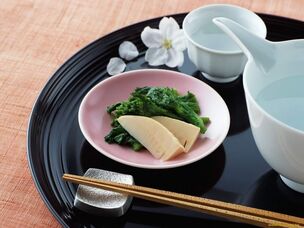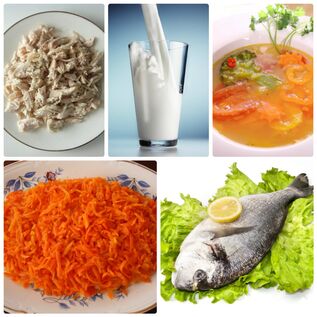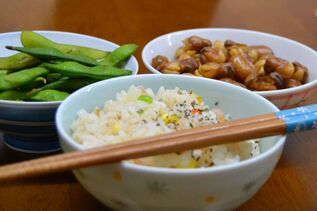
More and more new weight loss methods are gaining popularity among people who want to lose weight. This article will look in detail at the Japanese diet, its nature, rules, menus, reviews and much more.
The essence of the diet
The Japanese diet is one of the most popular weight loss methods today. The essence of its action lies in the fact that the food in it is low in calories, that is, proteins, fats and carbohydrates enter the body in insufficient quantities, resulting in rapid weight loss. To achieve the maximum effect of losing weight in this way, you must strictly follow the menu.
The benefits of this weight loss method include:
- Ability to lose a lot of weight in a very short time.
- The diet contains a variety of foods that can be satiated, unlike solid monodiet (rice, buckwheat).
- Thanks to the reorganization of the metabolism in the body and the proper exit from the diet, the lost weight does not return.
- As the menu is rich in vegetables, juices and fruits, the intestines are cleansed of toxins and the work of the stomach is improved.
- Green tea included in the diet improves mood, adds strength and works as an antioxidant.
- It is allowed to cook food in different ways - to boil, bake and even fry, so it is not very difficult to follow.
- Taste preferences change, well-being improves, and overall productivity increases.
- There are no complicated dishes on the menu, so you don't need any special cooking knowledge.
Disadvantages include:
- Frequent coffee drinking can cause bloating and heartburn.
- If the output is wrong, the lost weight can be restored quickly.
- Such a diet can exacerbate some diseases and worsen health.
- Lack of carbohydrates and vitamins can lead to depletion of the body.
Dietary rules
Prohibited foods include:
- Alcohol.
- Fatty meat.
- Sugar and pastries.
- Flour.
- Pasta.
- Sol.
- Smoked food.
- Flour.
- Potatoes.
- Fat.
- Mayonnaise and other sauces.

Foods to eat:
- Eggs.
- Birds and fish.
- Vegetables and fruits.
- Seafood.
- Cottage cheese and cheese.
- Coffee and green tea.
- Greens.
- rye biscuits.
- Homemade vegetable and fruit juices.
In addition, this weight loss system requires compliance with the following dietary rules:
- It is necessary to strictly follow the menu and not to change the sequence of days.
- Don't add other foods to your diet.
- Drink at least 1. 5 liters of green tea a day without sugar or water.
- This food can be used no more than once a year.
- Meat and fish can be steamed, boiled or grilled with a little oil.
- It is recommended to take vitamin complexes during the diet.
- Coffee should be made naturally, not from powder.
- Vegetables and fruits can be eaten whole or in salads.
- Salads can be seasoned with olive oil.
Varieties
There are three types of this diet, each with its own characteristics:
- Diet for seven days.Its characteristics are as follows:
- Complete rejection of salt.
- Eating only sea fish, vegetables, juices, eggs and meat. During this time you can lose up to seven pounds.
- Thirteen days of weight lossprovides the following nutritional characteristics:
- Seafood is added to the diet.
- The rest of the menu remains unchanged. This type of technique plays a more psychological role, as it lasts one day less than a two-week diet and one day can mean a lot to a person who is losing weight.
- Weight loss in fourteen daysis twice as much as the seven-day weight loss course this way. It is used when a person wants to continue to lose weight and has the desire and strength to do so. As for the diet, it remains virtually unchanged, except that the menu can be expanded with new vegetables or fruits.
Menu
The menu for this fourteen-day meal looks like this:
1. First week

- Monday:
- Breakfast - coffee.
- Lunch - two boiled eggs, tomato salad.
- Dinner - boiled beef, apple juice.
- Tuesday:
- Breakfast - coffee, oatmeal.
- Lunch - vegetable stew, steamed fish.
- Dinner - cottage cheese, orange juice.
- Wednesday:
- Breakfast - coffee.
- Lunch - broccoli and tomato salad, steamed chicken.
- Dinner - apple, grapefruit.
- Thursday:
- Breakfast - green tea.
- Lunch - two boiled eggs, stewed zucchini.
- Dinner - stewed beef, tomato.
- Friday:
- Breakfast - boiled egg, coffee.
- Lunch - steamed fish, carrot juice.
- Dinner - seafood, apple.
- Saturday:
- Breakfast - green tea.
- Lunch - beef stew with vegetables, tea.
- Dinner - kefir.
- Sunday:
- Breakfast - coffee.
- Lunch - salad of carrots and beets, boiled fish.
- Dinner - kefir, apple.
2. Week 2
- Monday:
- Breakfast - one boiled egg, coffee.
- Lunch - hard sur, apple.
- Dinner - fried fish, vegetable stew.
- Tuesday:
- Breakfast - tea.
- Lunch - roasted eggplant, fish cakes, tea.
- Dinner - boiled chicken fillet, cabbage salad.
- Wednesday:
- Breakfast - coffee.
- Lunch - roasted turkey, zucchini stew.
- Dinner - apple, orange.
- Thursday:
- Breakfast - tea.
- Lunch - salad of boiled beef, cucumbers and tomatoes.
- Dinner - pear, pineapple.
- Friday:
- Breakfast - coffee, diet cookies.
- Lunch - fruit.
- Dinner - broccoli salad with herbs, roasted fish.
- Saturday:
- Breakfast - coffee.
- Lunch - two boiled eggs, tomato current.
- Dinner - roasted fish, tomato.
- Sunday:
- Breakfast - tea.
- Lunch - salad of boiled beets, carrot juice.
- Dinner - kefir, boiled chicken.

Stop the diet
In order not to regain the lost weight, you need to get out of the diet properly.
To do this, follow these rules:
- After the end of the diet do not overeat, eat often, in small portions.
- The best breakfast is porridge.
- In the first week after completing the diet, you should also often eat cooked meat and vegetables. Even in the future it is recommended to adhere to such a diet.
- Sweets should be limited.
- Salty foods should also be consumed very carefully and in small amounts.

Reviews of those who lose weight
To better understand the effect of this diet, consider the reviews of people who have already tried it on themselves:
- Review # 1. “I've been on this diet four times already, and I've lost five pounds each time. I want to say that the menu in it is simple, all products are natural and healthy (except coffee). It is also advisable to drink vitamins during such a meal. Otherwise, the hair will darken very quickly and the nails will become brittle due to their lack.
- Review # 2. “When I first tried the Japanese weight loss system, I was amazed because with it I lost seven and a half kilograms in just one week! Then I decided to extend the course and after another seven days I lost five kilograms. For me personally, it was a success. Now for the cons: I wanted to eat all the time and after such a diet my metabolism was disrupted. "
- Review # 3. “A week ago, I completed a weight loss course that was designed for fourteen days. My result during this time is minus six kilograms. The most difficult for me were the first days of such a diet and complete rejection of salt and pastries. The whole food looked dull and tasteless, but then I really started to distinguish the taste of each product better and I even liked it. To taste the salt, I poured lemon juice on the salads and it helped. There's also meat and fish on the menu, so I wasn't very hungry. So far not a single pound has returned, so I am very happy! "
- Review # 4. “I ate the Japanese diet for a week and was very disappointed because I lost only two pounds of the promised six. In addition, this diet is not balanced and insufficient for the normal functioning of the body. I also don't think that drinking coffee every day on an empty stomach won't hurt your stomach. For me personally, this is a very dubious technique, so I don't think I will repeat it. "
- Review # 5. “I've already tried many different diets, and the last one was Japanese. I sat on it for two weeks and even followed all the dietary rules. In the beginning, it was unusual to eat everything without salt, because I really like salty foods, but still beauty is more important to me. Gradually I got used to it and didn't even notice that the food wasn't too salty. As for the menu, it is quite tasty because it contains fruits, vegetables, fish and much more. The only drawback I found with such a diet was the loss of vitamins and lack of glucose, which sometimes made me dizzy. In all, I've lost six pounds in that time, and that's enough for me. "
After analyzing the reviews, we can say that in most cases the Japanese diet is effective and helps to lose weight. However, due to a slightly unbalanced diet, which also lacks spices, sugar and salt, it can be difficult to maintain such a diet.
Reviews of doctors
Nutritionists claim that despite the positive reviews, the Japanese diet, like any restrictive food system, disrupts metabolism and leads to stress in the body. In addition, doctors recommend that you give up daily use of coffee for breakfast, as this leads to heart and stomach diseases.
People who already have health problems should be especially careful to follow this method of weight loss, as such a diet can significantly worsen a person's condition. Also, nutritionists do not recommend repeating the Japanese diet more than once a year, otherwise you can seriously break down your diet, which will only worsen the weight loss process.However, if a person is healthy and has no special contraindications, which will be described below, then he can adhere to this regimen. The main thing is to follow the rules of the diet and not to reduce portions in the hope that this will speed up the weight loss process. If you feel unwell, lose your mood or lose strength during the diet, it is advisable to stop this method and switch to a regular balanced diet.
Contraindications for use
- Pregnancy and breastfeeding.
- Under eighteen.
- Diseases of the heart, liver and kidneys.
- Diseases of the gastrointestinal organs, their exacerbation.
- Chronic diseases.
- Gastritis.
- Hypertension.
- Diabetes mellitus.
Blitz Tips
- You should consult a nutritionist before starting this diet.
- This diet can not be followed for more than two weeks, otherwise the metabolism can be severely impaired.
- If dizziness or abdominal pain occurs during this meal, stop the diet immediately.
































